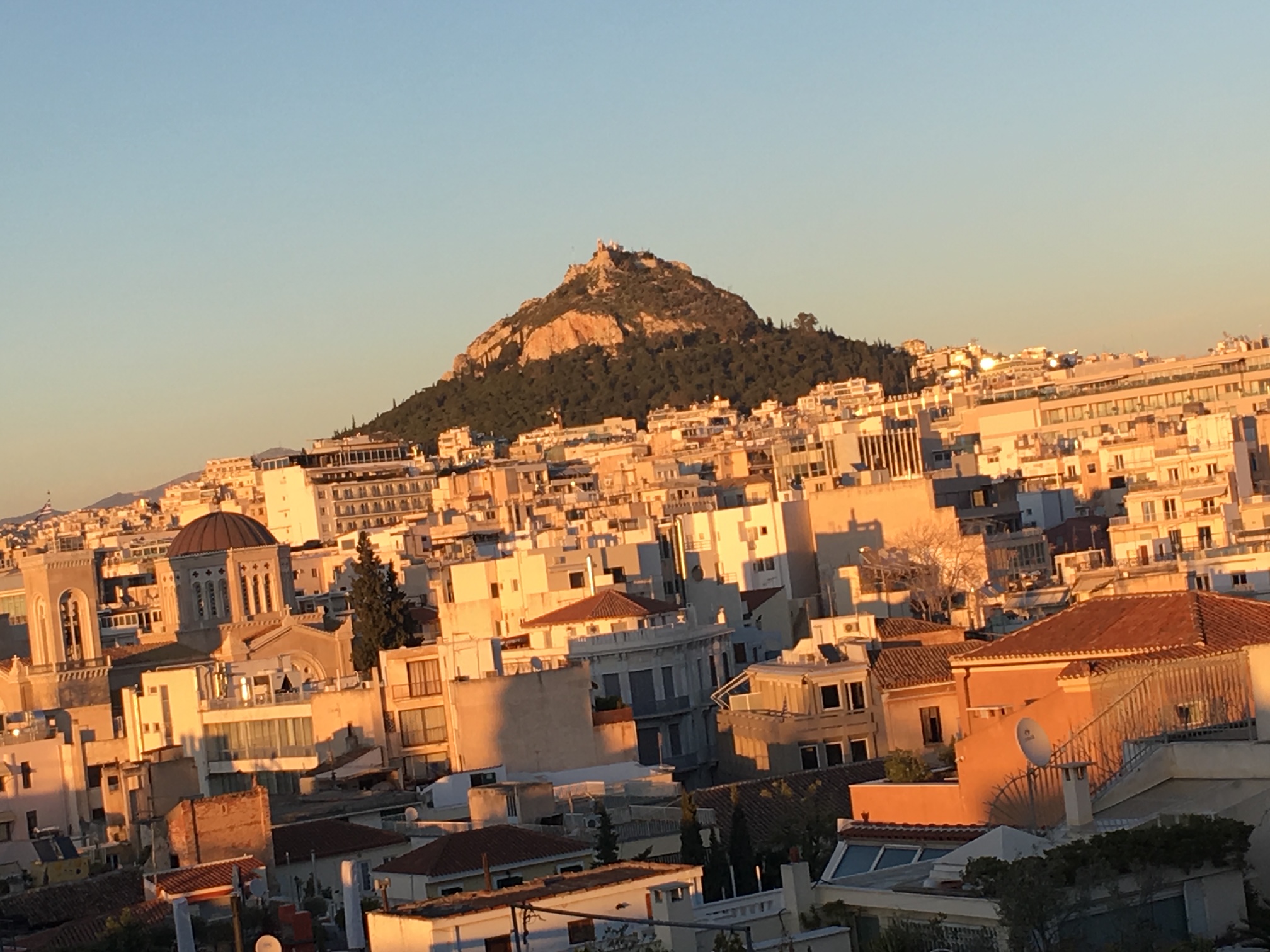Amongst the undulating hills of Athens, Lycabettus Hill stands out as the highest peak. Seen from almost anywhere in the city, the hill occupies a pivotal position in the urban imagery of Athenians. The massive public green space is used by residents and tourists alike who are looking to escape the hustle of the city. The sheer size, diversity, and unique history of the hill allow for a wide range of use and enjoyment. Tourists arrive at the top via funicular to take in unobstructed views of the Acropolis and stay for a coffee at the hilltop cafe. Residents use the hill for recreational activities, including hiking, bird-watching, and dog-walking. Lycabettus Hill also has significant cultural value given its two churches – popular sites for baptisms, and more recently, weddings. The peak of the hill used to hold summer festivals and concerts in a now-decommissioned amphitheater – a site that remains a focal point in Athenians’ connection to the hill.
While the hill was celebrated in Athens, there had been a recognized gap in realizing its full potential as a central public green space in the city. It was not designed or maintained to its fullest, with eroding pathways, transportation challenges, environmental degradation, and safety concerns. The city recognized the opportunity the site provided to address a number of resilience challenges, including urban heat island mitigation, stormwater mitigation, urban greening, and the creation of a collaborative management structure for public green spaces.
From 2018-2019 Rebuild worked in partnership with the City of Athens,100 Resilient Cities, and four universities – The Technical University of Athens, The Agricultural University of Athens, The Interdisciplinary Program for Monuments, Archeology, and Architecture, New Jersey’s Institute of Technology, and Interboro Partners – to develop a participatory process that led to a master plan and long-term stewardship of the site.
“Lycabettus 2030 will be a landmark reference point and a model of exemplar environmental, cultural, financial management and social participation.” — Collaborative Mission Statement
The process began with aligning stakeholders into a shared vision through a workshop that brought together more than 40 high-level municipal and NGO leaders from diverse backgrounds to agree on a mission statement.
The Technical Universities conducted studies as Rebuild and NJIT created engagement strategies to learn from residents and tourists what needs this project could address. Together, we created a survey and partnered with the local universities and tourism industry to distribute.
Rebuild then led extensive outreach with different sectors including Culture, Economic Development, Environment, Tourism, Civil Society, and Transportation.
The first round of meetings was followed by hitting the streets with an “engagement station” that was brought to train station entrances, busy commercial streets and farmer’s markets. Local students staffed the stations that included a model of Lycabettus hill, and an original “game” called “Lycabettus Mix” that asked passersby what they liked and disliked about the current status of the Hill, and what their ideal makeup of activities would be. Answers were recorded for each participant, respondents were analyzed, and a report on the engagement activities was released.
Rebuild continued its work by studying worldwide examples of successful park management practices and recommended a long-term framework to the City. Learning from the research stage, Rebuild, the City of Athens, and the Universities then collaborated to design interventions and highlight short term projects that could be implemented with a $2 million budget available from the European Union.
Finally, Rebuild executed the “One Lycabettus” festival which included a water tour, nature tour, orchestra and engagement station.
Highlights:
- Nearly 1,500 responses to digital survey
- Worked with 50+ organizations
- 13 engagement stations around the city
- Partnered with organizations to host events on the Hill
- Held small group meetings with NGO’s and advocates to discuss the principles, enhance partnerships and collect their ideas and concerns.
- Led 2 workshops with high-level Government and NGO leaders
- Included dozens of stakeholders who feel part of this process
- Released two reports
- Gave the City a clear understanding of the public’s wishes to incorporate into final design
The work culminated with a conference and press conference in which they discussed what was learned and released the plans for the short term projects the city could do to activate certain spaces, creating a collaborative management structure for the Hill while also enhancing its environmental and recreational capacity.
Read the Management Report for Lycabettus Hill here.
Read the Engagement Report here.
Read the Final report (in Greek) here.
View the slide show of findings here.

